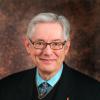Just a few days after Christmas, a historic Presbyterian church in midtown Kansas City, Mo., burned to the ground.
Westport Presbyterian Church had only a few dozen members, but my friend Scott Myers, the pastor, and some members of his aging congregation had figured out how to continue serving the kicky neighborhood that has been the church's home for 176 years.
Westport, besides being a community of faith, became a community center. A day care center, arts groups, nonprofit organizations and others found a welcome home at Westport, and though crowds of young seekers weren't joining, the neighbors knew Westport Presbyterian Church was a jewel.
Westport's fire was a reminder to congregations of all faiths that what makes a church is not a building. Rather, the church is the people. And though we often become emotionally attached to the physical space in which we worship, we do so at the risk of losing sight of the true meaning of church.
I'm not proposing abandoning church buildings and meeting, say, in homes or in tents pitched in city parks (though that wouldn't hurt us now and then).
Indeed, some of the most magnificent holy spaces I know are located within church buildings -- and not just my own Presbyterian congregation's. For instance, I'm always struck silent when I enter the redone sanctuary of Visitation Catholic Parish or the Cathedral of the Immaculate Conception in Kansas City.
Both of them whisper to me of the astonishing grace and beauty of God.
But having written Visitation's centennial commemoration book a couple of years ago, I also know that what makes Visitation a church is not the stunning interior of its building but the beauty of its people.
The day after I watched local TV news showing 30-foot flames flying into the chilly sky from the roof of the 107-year-old Westport building, I drove by to see it for myself. It's a place I know well, having attended many meetings there and even having preached there three or four times.
Even though my intellect knew that the church is not Westport's mostly limestone building, I still felt deep anguish seeing the mess the fire left. I think I know why.
It's at least partly because what happens to us within those sacred spaces is also holy and memorable. And we want to imagine that the space will be preserved in some way eternally so as not to diminish what we've experienced.
That's why I find it sad that the Illinois church building in which I attended Sunday school as a boy and was confirmed -- the church in which the funerals for both my mother and father were held -- today houses a congregation of another faith tradition.
And it's why, were my congregation's current building, which is nearly 100 years old, to be destroyed, my heart would ache, remembering all important times in my life that were played out under that roof -- the worship services, the funerals, the weddings, the classes, the meetings and on and on.
So, yes, I understand that as people of faith we must drive the stakes of our tents into the ground loosely and be ready to move wherever God would have us go. I really get that.
But I also know that even nomadic people develop a theology of place and space. For instance, to commemorate a God-given victory over the Philistines, 1 Samuel 7 says that Samuel "took a stone and set it up between Mizpah and Shen, and called its name Ebenezer, saying, 'Thus far the Lord has helped us.'"
He was making space holy, just as God there had made time holy.
And somehow we must live in the tension between the holy space we have marked off and places to which God would have us go next.
I sometimes just wish that God weren't so anxious to move us on.
[Bill Tammeus, a Presbyterian elder and former award-winning Faith columnist for The Kansas City Star, writes the daily "Faith Matters" blog for The Star's website and a monthly column for The Presbyterian Outlook. His latest book, co-authored with Rabbi Jacques Cukierkorn, is They Were Just People: Stories of Rescue in Poland During the Holocaust. Email him at wtammeus@kc.rr.com.]



